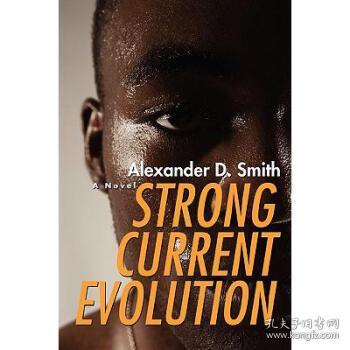The Evolution and Current State of American Textile Technology
American textile technology has undergone significant evolution over the past century, reflecting both technological advancements and societal changes. Initially focused on simple production processes, American textiles have evolved into sophisticated products that cater to a wide range of consumer needs. The introduction of synthetic fibers in the mid-20th century revolutionized the industry, allowing for greater flexibility and durability in fabrics. This shift was further accelerated by the development of high-performance yarns and advanced dyeing techniques. Today, American textiles are characterized by their ability to produce a wide range of fabrics, from lightweight cotton to luxurious silk and wool blends. The industry is also notable for its commitment to sustainability, with efforts to reduce waste and increase efficiency in manufacturing processes. Despite these advancements, challenges remain, including competition from other countries and the need to adapt to changing consumer preferences. Overall, American textile technology continues to evolve, driven by innovation and societal demands for higher quality and more sustainable products.
Introduction: Textile technology is a critical component of the global economy, with its development directly impacting the quality of life for millions worldwide. In the United States, textiles have been at the forefront of innovation and design, leading to advancements that have not only improved the standard of living but also set benchmarks for global textile production. This presentation will delve into the evolution of American textile technology, examining the key milestones and current trends in the industry.
Historical Perspective: The roots of American textile technology can be traced back to colonial times when European craftsmen introduced their knowledge of weaving and dyeing techniques. However, it was during the industrial revolution in the late 18th century that significant changes began to transform the industry. The advent of steam power allowed for larger-scale production, while the introduction of new materials like cotton and silk led to increased efficiency and diversity in textile designs.

In the early 20th century, the United States emerged as a global leader in textile manufacturing through the development of advanced machinery and processes. This period saw the emergence of factories employing thousands of workers, producing textiles for export to Europe, Asia, and the Americas.
Modern Trends: Today, American textile technology continues to evolve, driven by a desire for sustainability, eco-friendliness, and enhanced functionality. Technological advancements in digital printing, automation, and bioengineering are transforming the industry, enabling manufacturers to produce high-quality products with greater speed and precision.
One notable trend is the growing use of recycled materials in textile production. Many American manufacturers are adopting strategies to reduce their environmental footprint by sourcing sustainable raw materials and implementing recycling programs. For example, Levi Strauss & Co. has invested heavily in renewable energy and recycled water systems to support its commitment to sustainability.
Another area of focus is the integration of artificial intelligence (AI) into textile production. AI technologies are being used to optimize yarn blending, color matching, and pattern generation, resulting in faster design cycles and more efficient production processes.
Case Study: One company that epitomizes the American textile industry's modern approach to sustainability is Patagonia. Founded in 1973 by Yvon Chouinard, Patagonia is renowned for its innovative use of recycled materials and its commitment to ethical manufacturing practices. The company's success can be attributed to its focus on sustainability, which has enabled it to maintain a strong brand image despite economic downturns.
Patagonia's approach to sustainability includes the use of organic cotton, recycled polyester, and other eco-friendly materials in its clothing and accessories. Additionally, the company invests in research and development to develop new fabrics and processes that minimize waste and promote resource efficiency.
Conclusion: As American textile technology continues to evolve, it is evident that innovation and sustainability remain key drivers of growth. From the introduction of new materials to the integration of AI and automation, American companies are pushing the boundaries of what is possible in the textile industry. As such, it is clear that the future of American textile technology will be marked by continued progress towards a more sustainable and efficient industry.
美国纺织品技术水平概述

美国作为全球纺织品生产的重要国家,其纺织品技术水平一直处于行业前列,从纤维制造到纺织品的研发与设计,美国在多个领域都取得了显著的成就,本篇文章将详细介绍美国纺织品技术水平的相关信息。
技术发展现状
- 纤维制造技术:美国在纤维制造领域拥有先进的设备和技术,能够生产出高质量、高附加值的纤维产品,美国棉花生产已经实现了高度自动化和智能化,提高了纤维的质量和产量。
- 纺织材料研发:美国在纺织材料研发方面投入了大量资源,不断探索新的纺织材料和纤维复合材料,新型纤维材料的开发和应用,为纺织品提供了更多的设计选择和功能特性。
- 纺织工艺技术:美国在纺织工艺技术方面也取得了显著成就,先进的纺织机器和自动化设备的应用,使得纺织品生产更加高效、环保,先进的纺织工艺技术也使得纺织品更加柔软、舒适、耐久。
案例分析
以某知名纺织品公司为例,展示美国纺织品技术水平的具体表现,该公司专注于纺织品研发与设计,其产品涵盖了各种类型的纺织品,包括服装、家居用品等,该公司采用了先进的纤维制造技术和纺织工艺技术,使得其产品具有更高的品质和功能性。
- 纤维制造技术:该公司在纤维制造过程中采用了先进的生产设备和技术,能够生产出高质量的棉花纤维和合成纤维,该公司还注重环保和可持续发展,采用了环保型的生产流程和材料。
- 纺织材料研发:该公司不断探索新的纺织材料和纤维复合材料,以满足市场需求,该公司开发了一种新型的抗菌纤维,具有更好的抗菌性能和舒适度,受到了消费者的青睐。
- 纺织工艺技术:该公司采用了先进的纺织机器和自动化设备,使得纺织品生产更加高效、环保,该公司还注重产品的设计和创新,使得其产品具有更高的附加值和竞争力。
技术水平提升策略
为了进一步提升美国纺织品技术水平,需要采取以下策略:
- 加强技术研发和创新:加大对技术研发和创新的支持力度,推动新技术和新材料的研发和应用。
- 提高生产效率和质量:采用先进的生产设备和工艺技术,提高生产效率和质量,降低成本和提高产品竞争力。
- 加强品牌建设和营销:加强品牌建设和营销力度,提高产品的知名度和美誉度,拓展市场渠道和销售网络。
美国在纺织品技术水平方面取得了显著成就,其技术水平不断提升和完善,美国将继续加强技术研发和创新,提高生产效率和质量,加强品牌建设和营销,以推动纺织品行业的发展和进步,美国也将继续关注市场需求和消费者需求,不断探索新的纺织材料和纤维复合材料,以满足市场需求和提高产品竞争力。
Articles related to the knowledge points of this article:
The Unique Appeal of the Three Dragon Needle Textile Wholesale Market
The Role of Textile Testing in Wuxi,China



